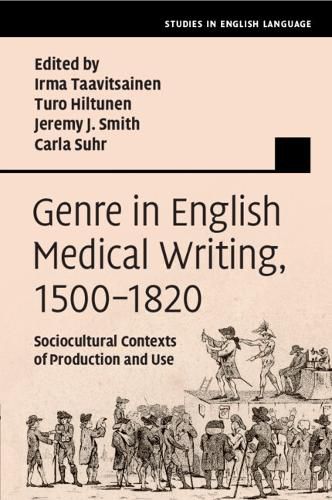Readings Newsletter
Become a Readings Member to make your shopping experience even easier.
Sign in or sign up for free!
You’re not far away from qualifying for FREE standard shipping within Australia
You’ve qualified for FREE standard shipping within Australia
The cart is loading…






Written by an interdisciplinary team of scholars, this book offers novel perspectives on the history of medical writing and scientific thought-styles by examining patterns of change and reception in genres, discourse, and lexis in the period 1500-1820. Each chapter demonstrates in detail how changing textual forms were closely tied to major multi-faceted social developments: industrialisation, urbanisation, expanding trade, colonialization, and changes in communication, all of which posed new demands on medical care. It then shows how these developments were reflected in a range of medical discourses, such as bills of mortality, medical advertisements, medical recipes, and medical rhetoric, and provides an extensive body of case studies to highlight how varieties of medical discourse have been targeted at different audiences over time. It draws on a wide range of methodological frameworks and is accompanied by numerous relevant illustrations, making it essential reading for academic researchers and students across the human sciences.
$9.00 standard shipping within Australia
FREE standard shipping within Australia for orders over $100.00
Express & International shipping calculated at checkout
Written by an interdisciplinary team of scholars, this book offers novel perspectives on the history of medical writing and scientific thought-styles by examining patterns of change and reception in genres, discourse, and lexis in the period 1500-1820. Each chapter demonstrates in detail how changing textual forms were closely tied to major multi-faceted social developments: industrialisation, urbanisation, expanding trade, colonialization, and changes in communication, all of which posed new demands on medical care. It then shows how these developments were reflected in a range of medical discourses, such as bills of mortality, medical advertisements, medical recipes, and medical rhetoric, and provides an extensive body of case studies to highlight how varieties of medical discourse have been targeted at different audiences over time. It draws on a wide range of methodological frameworks and is accompanied by numerous relevant illustrations, making it essential reading for academic researchers and students across the human sciences.